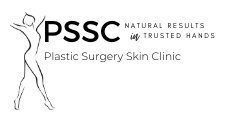The Secrets Behind Common Skin Lesion Causes
Skin lesions are abnormal growths or appearances on the skin that can result from various causes. These lesions can range from harmless to serious, potentially impacting both physical health and self-esteem.
We understand that the impact on your self-esteem can be significant. Finding the causes of skin lesions is crucial to determine the most effective treatment options so your lesions don’t linger unnecessarily. In this blog, we will explore common skin lesions, their causes, and the best approaches for treatment.
- Acne
Description: Acne appears as pimples, blackheads, whiteheads, and cysts on the face, neck, back, and shoulders. Severe acne may result in scarring.
Cause: Acne occurs when hair follicles become clogged with oil and dead skin cells, leading to inflammation and infection.
Treatment: Treatments include topical and oral medications, laser therapy, and chemical peels to reduce scarring. At PSSC, we often recommend the BBL Forever Clear® and FRACTORA Rejuvenation treatments to reduce the appearance of skin lesions.
- Blisters
Description: Blisters are small, fluid-filled sacs on the skin’s surface, often seen on the hands and feet. They can be clear or blood-filled.
Cause: Blisters are caused by friction, burns, or infections. They form as fluid accumulates under the skin.
Treatment: Most blisters heal on their own. However, severe cases may require draining and protective dressings.
- Cellulitis
Description: Cellulitis appears as a red, swollen, and tender area of skin, usually on the legs. The skin may feel warm and tender to the touch.
Cause: A bacterial infection of the skin and tissues beneath, often from Staphylococcus or Streptococcus bacteria.
Treatment: Antibiotics are essential to treat cellulitis. Severe cases may require hospitalization.
- Chickenpox & Shingles
Description: Chickenpox causes itchy, red spots that turn into fluid-filled blisters. Shingles presents as a painful, blistering rash, usually on one side of the body.
Cause: Both are caused by the varicella-zoster virus. Chickenpox affects mostly children, while shingles can occur in adults with chickenpox.
Treatment: Antiviral medications can reduce the severity of rashes, especially for shingles infections. Pain relief and anti-itch treatments help manage symptoms. The lesions tend to fade over time, but topical creams and laser treatments can reduce their appearance more rapidly.
- Cold Sores
Description: Cold sores are small, painful blisters that usually appear on or around the lips. They start as red, itchy spots and progress to blisters.
Cause: Cold sores are caused by the herpes simplex virus (HSV-1).
Treatment: Antiviral creams and oral medications can reduce outbreak frequency and duration.
- Cysts
Description: Cysts appear as smooth, round lumps under the skin. They can be small or large and are commonly found on the face, neck, and torso.
Cause: Cysts are closed pockets of tissue filled with fluid or pus, often caused by blockages in ducts or infections.
Treatment: Minor cysts may resolve independently, but larger ones may require drainage or surgical removal. Lesions leftover by cutaneous cysts can be removed with laser treatment.
- Eczema
Description: Eczema appears as red, itchy, and inflamed patches of skin, often on the hands, feet, and face. The skin may become thickened and cracked.
Cause: Eczema, or atopic dermatitis, results from an overactive immune response, often triggered by allergens or irritants.
Treatment: Moisturizers, corticosteroids, and immune-modulating treatments can help manage symptoms.
- Dermatitis
Description: Dermatitis presents as red, swollen, and itchy skin. It can be dry and flaky or oozing and crusty, depending on the type.
Cause: Dermatitis is skin inflammation caused by irritants, allergens, or genetics.
Treatment: Avoiding triggers, using anti-inflammatory creams, and maintaining good skincare routines are effective.
- Keloids
Description: Keloids appear as raised, thick, and smooth scars that extend beyond the original injury site. They are often pink or purple initially and may become darker over time.
Cause: Keloids are overgrowths of scar tissue that form after skin injuries.
Treatment: Options include corticosteroid injections, and surgical removal. At PSSC, we can treat keloids with non-invasive treatments such as our Halo Hybrid Fractional Laser.
- Psoriasis
Description: Psoriasis presents as red patches covered with silvery scales. It commonly affects the scalp, elbows, knees, and lower back.
Cause: Psoriasis is an autoimmune disease causing rapid skin cell turnover, leading to scaling and inflammation.
Treatment: Topical treatments, phototherapy, and systemic medications can control symptoms.
- Rashes
Description: Rashes vary widely in appearance, from red, itchy patches to swollen, blistering areas. They can be localized or widespread.
Cause: Rashes can result from infections, allergies, or autoimmune diseases.
Treatment: Identifying and avoiding triggers, topical treatments, and taking prescribed medications can help.
- Staph Infections
Description: Staph infections may present as boils, impetigo, or abscesses. They often appear as red, swollen, and painful areas with pus or other drainage.
Cause: Staphylococcus bacteria cause these infections, ranging from minor skin issues to severe infections.
Treatment: Antibiotics are necessary for treatment. Proper hygiene can prevent recurrence.
- Warts
Description: Warts are small, rough growths on the skin, often found on the hands, feet, and face. They may be flesh-colored or darker.
Cause: Warts are caused by human papillomavirus (HPV) infections.
Treatment: Over-the-counter, cryotherapy and laser treatments can effectively remove warts. Laser treatments can also help remove stubborn warts when topical treatments fail.
Clearer Skin: Understand and Treat the Root Cause
Whether dealing with acne, eczema, or more serious infections like cellulitis, understanding the root cause allows for targeted and effective treatments. Always remember, consulting with a healthcare provider for a proper diagnosis and treatment plan is crucial for your journey to healthy skin.
They will help you determine the ideal fix, whether its a home remedy or an in-clinic treatment. Regardless of the cause, you can be confident that your lesions don’t have to leave a lasting impression on your skin!
Looking for a quick and simple procedure that can help you turn the clock back? Get in touch with us so we can assess you and begin your minimally-invasive journey today!

